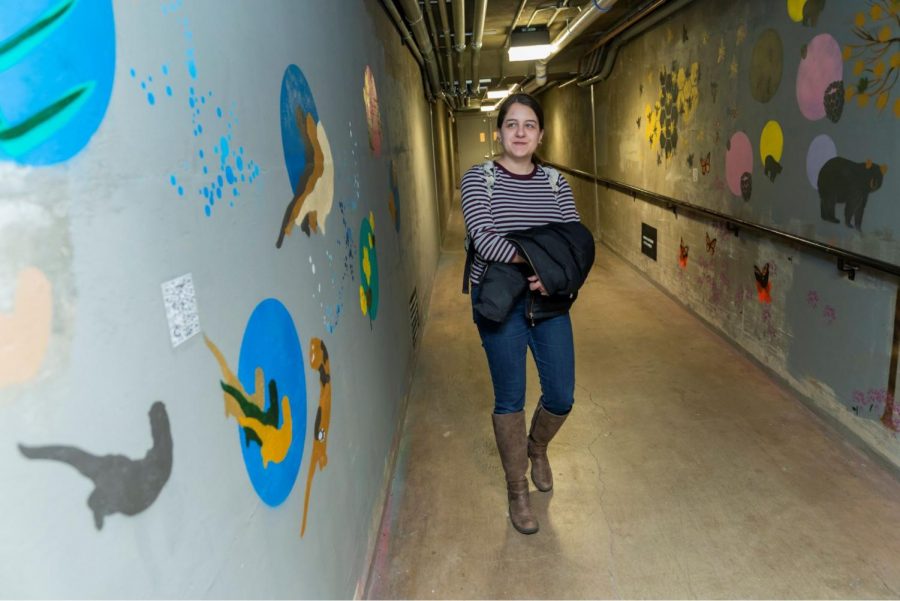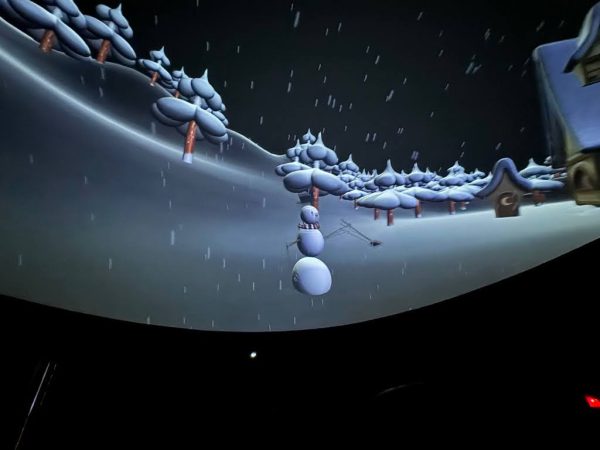New Mural Underneath Ho and Olin
The 2017-2018 first-year reading, The Sixth Extinction by Elizabeth Kolbert, sparked an eco-art project that now covers the once drab Ho/Olin tunnels. The novel examines a new era of ecological change and mass extinction brought around almost entirely by humans—the proposed “Anthropocene era”.
Inspired by the novel, the project is headed by Associate Professor of Environmental Studies and Africana and Latin American Studies April Baptiste, Associate Professor of Geography and Russian/Eurasian Studies Jessica Graybill and Assistant Professor of Art and Art History Margaretha Haughwout.
“We wanted to think about the local effects of these big ideas, like how are they affecting these environments in Central New York,” Haughwout said.
It is both an informational project meant to recognize the changes in our local environment from human causes as well as a demonstration of art as a public, collaborative activity.
Art students from Haughwout’s classes, as well as other students, have collaborated on the creation of the mural. The students not only put the art onto the walls, but also came up with many of the ideas and details such as stencil designs and themes. Since many of the students were from Professor Haughwout’s studio art class, they had a new learning experience as well.
One key person was alum Kimberly Duncan, who hand-drew portraits of environmental leaders in contrast to the spray painted stencil art that covers the rest of the walls. She also drew a landscape of Colgate’s campus which added to the conceptual structure of the project.
Other important students who worked on the project were third-year student Elise Kennedy and recent Colgate graduate Claudia Buszta who helped portray the changing local environments on the wall.
The two sides of the tunnel represent two possible paths for humanity.
“There is one side that is maybe more dystopian…it’s sort of the disappearing wolves, increasing ticks or disappearing bats. On the left it’s sort of imagining species coming back, imagining these ecologies that are healthier for humans. [It’s] also just trying to challenge the idea that things are just dying,” Haughwout said.
The mural also depicts local animals affected by the Anthropocene Era, which aims to show viewers the nuances of species decline within their own community.
Although the pace has slowed down for now, the project is an ongoing one, as Haughwout plans to have the walls completely filled. More information about the project and animals depicted can be found at http://mhaughwout.colgate.domains/6thestreet/.









